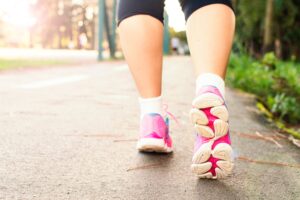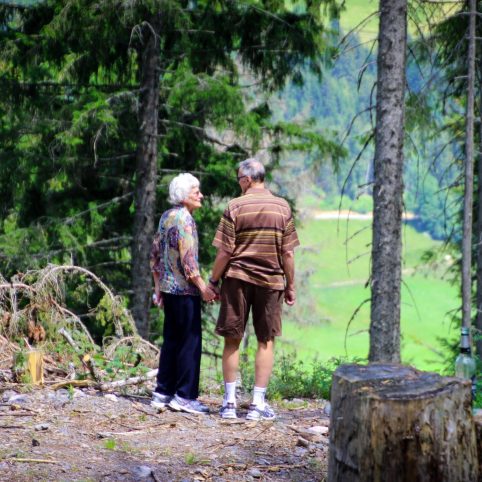Being overweight can put extra strain on joints, which can lead to further problems with arthritis, so trying to maintain an ideal body weight is important for preserving joint health.
There may be an increased risk of osteoporosis in individuals with haemophilia. As a result, this may make the replacement of joints more problematic. Another aspect of ageing is that although prophylaxis may prevent haemophilic arthropathy, it is unlikely to have an impact on the most common type of arthropathy in older individuals, i.e. degenerative or osteoarthritis.

The best prevention for osteoporosis is to build up peak bone density by 35 years of age. However, if osteoporosis has already developed it is possible to prevent further deterioration and reduce the risk of fractures by:
- Exercise: weight-bearing exercise may help to retain minerals in the bone. Activities such as walking, hiking, swimming, and pilates are low impact and may improve bone density and lower the risk for developing bone disease.
- Lifestyle changes: remove risk factors such as smoking and ensure a moderate alcohol and caffeine intake. A diet containing calcium, phosphate and vitamin D will help to improve bone strength.
- Medication: a specialist doctor may advise firstly taking calcium and vitamin D supplements, but if the fracture risk is significantly increased, other drugs are available.
- Steroids: should be avoided if possible.
- Surgery: may be required, especially if a joint is damaged.
Slips, Trips And Falls
Slips, trips and falls can happen to anyone, but they are more common and more significant as we get older. This is even more important in people with haemophilia due to repeated bleeding, joint deformities, muscle weakness and impaired balance. About 10% of falls in people with haemophilia result in serious injury. Many falls are preventable and injuries from falls can be minimised.
Physiotherapy and an active lifestyle are important for the preservation of joint function and improving your quality of life. They also play an important role in reducing the risk of falls. Inactive or unfit people tend to have poorer balance and weaker muscles and can be unsteady when walking. Over time, this actually makes you more likely to fall because your muscles get weaker, your joints stiffen, and your balance gets worse.
Physical activity can:
- Improve balance
- Improve muscle strength and flexibility
- Keep bones strong
- Increase energy levels
- Help with sleeping problems
- Help to control blood pressure, blood sugar levels and weight
- Help you feel good about life
What you can do:
- Be physically active every day. Whatever you age, aim to do at least 30 minutes of activity, at least 5 times a week.
- The activity should make you breathe a bit faster and your heart pump a bit harder, but you should still be able to talk while doing the activity.
- Exercise and activities that make you both stronger and improve your balance lower the risk of having a fall.
- Some examples are Tai Chi, dancing, or group exercise programmes that include balance and muscle strengthening.
- Talk to a physiotherapist about what balance and strengthening exercises or activities will best suit you, and how to manage any pain you might have.
- A physiotherapist can also advise you about whether a walking aid, such as a stick or frame, would help you. Using a walking aid can increase your steadiness and confidence to walk more. It is important that walking aids are properly adjusted for you, and properly maintained (e.g. replace worn stoppers).
- If you have arthritis, being active helps to control pain, weakness and stiffness.
- If you are unable to walk, it is still important to get outside and socialise. Aids such as mobility scooters should be considered.
